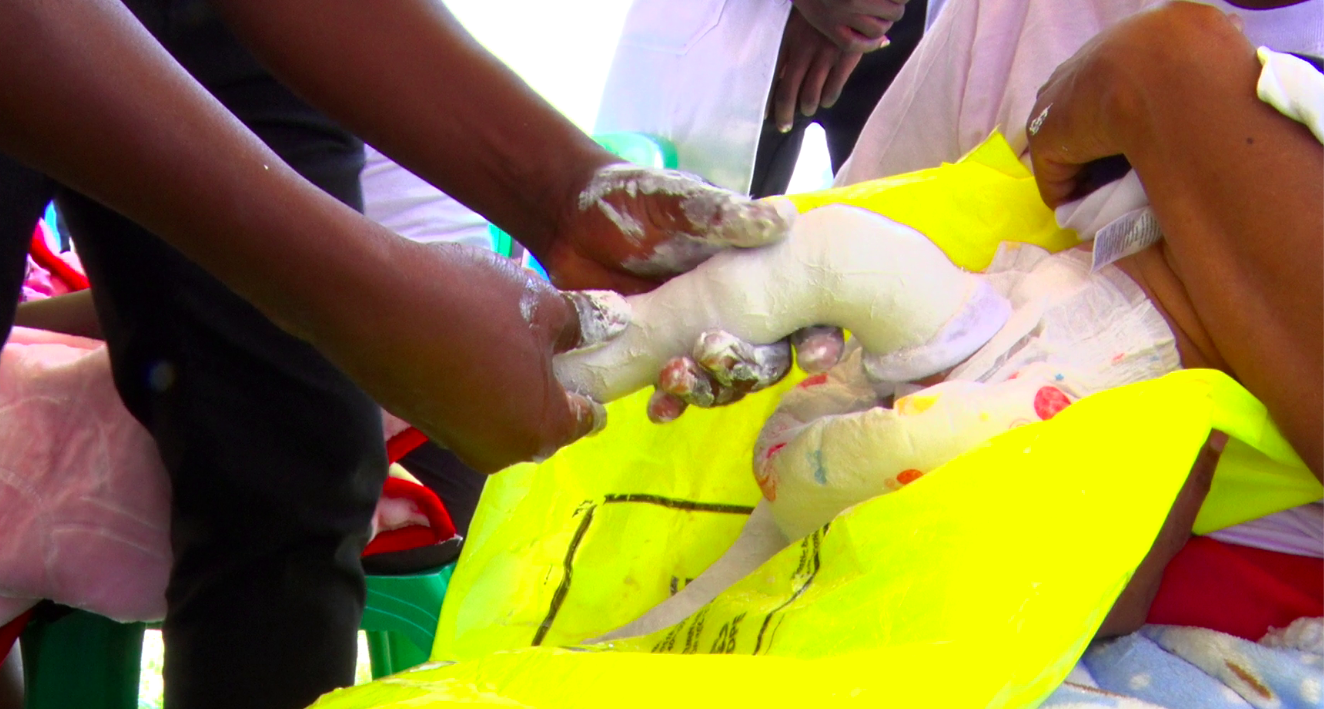 Medics cast the feet of a baby born with clubfoot. Early intervention, ideally at birth or within three months, can result in full correction. Photos/Polycarp Ochieng.
Medics cast the feet of a baby born with clubfoot. Early intervention, ideally at birth or within three months, can result in full correction. Photos/Polycarp Ochieng.
In many Kenyan communities, the birth of a child with visible physical
deformities often carries a heavy stigma.
Families may view such children as harbingers of bad
omens or curses, leaving young mothers to bear the emotional and social burden
of raising a child with a disability.
This cultural perception compounds the challenges
faced by those living with conditions like clubfoot, as highlighted during a
recent Clubfoot Open Day at Migori County Referral Hospital.
Among the attendees was Ascar Akinyi Yogo, a mother
of two children with clubfoot and a lifelong clubfoot patient herself.
“I was born with clubfoot, but in my entire family, there
is no history of such a deformity. This made me pass through a lot of
discrimination and suffering,” she shared.
Growing up, Ascar faced rejection from her family, who saw
her condition as a sign of misfortune.
She endured physical pain from walking long
distances or standing for extended periods, as well as emotional distress from
societal exclusion.
Tragically, Ascar’s struggles continued when her first
child, a daughter, and her second child, a son, were born with the same
condition.
Determined to spare her children the hardships she
faced, she sought medical help for her daughter but was met with
discouragement.
Dr Amos Odhiambo, an orthopedic technologist at
Migori County Referral Hospital, explains that club foot is a congenital
deformity common in young children, often inherited.
While the exact cause remains unknown, untreated
cases can lead to permanent disability.
However, early intervention ideally at birth or within
three months can result in full correction.
“When we begin treating clubfoot deformities early, we end up with
normal legs in their adult stages,” Dr Odhiambo stated.
He noted that cases often go unnoticed when children are
born outside health facilities, leading to “neglected cases” where correction
becomes difficult.
The hospital’s physiotherapy department sees an
average of eight children with club foot weekly, totaling approximately 30
cases monthly.
Interestingly, most cases involve female children, though
the reason remains unclear.
Of these cases, an impressive 98 per cent achieve successful correction, a
statistic that has boosted confidence among parents seeking treatment at the
facility.
Happiness Marwa, whose daughter
underwent successful clubfoot correction, shared her relief.
“When I realised my child had folded feet at birth, I
sought help from the facility and met Dr Amos. My child is walking normally
now, and it’s hard to tell which foot had issues,” she said.
Similarly, Mirriam Nyabony, whose daughter is
currently in therapy, expressed hope for a full recovery after prompt
intervention at the hospital.
Despite the hospital’s success, challenges persist.
Dr Fredrick Otieno, head of the physiotherapy department, lamented that some
parents hide their children due to fear of discrimination, even though
correction services are offered free of charge.
“I still fail to understand why some parents hide
their children instead of coming forward to be helped,” he said.
For adults with untreated clubfoot, surgical options
exist but are costly, prompting Dr Otieno to encourage enrollment in the Social
Health Authority (SHA) insurance scheme or private insurance.
He also called for support from organisations that can
donate essential medical equipment to sustain the hospital’s efforts.
The Club foot Open Day at Migori County
Referral Hospital underscored the transformative impact of early intervention
and community awareness.
Meanwhile, as more parents step forward, the
facility continues to offer hope to families affected by this treatable
condition, challenging deep-rooted cultural beliefs and paving the way for
children to lead normal, active lives.









